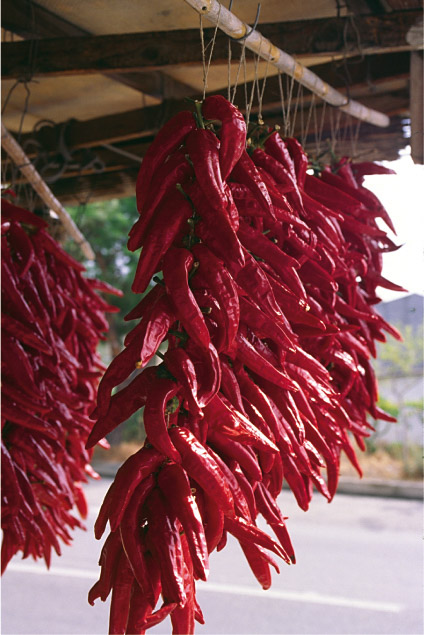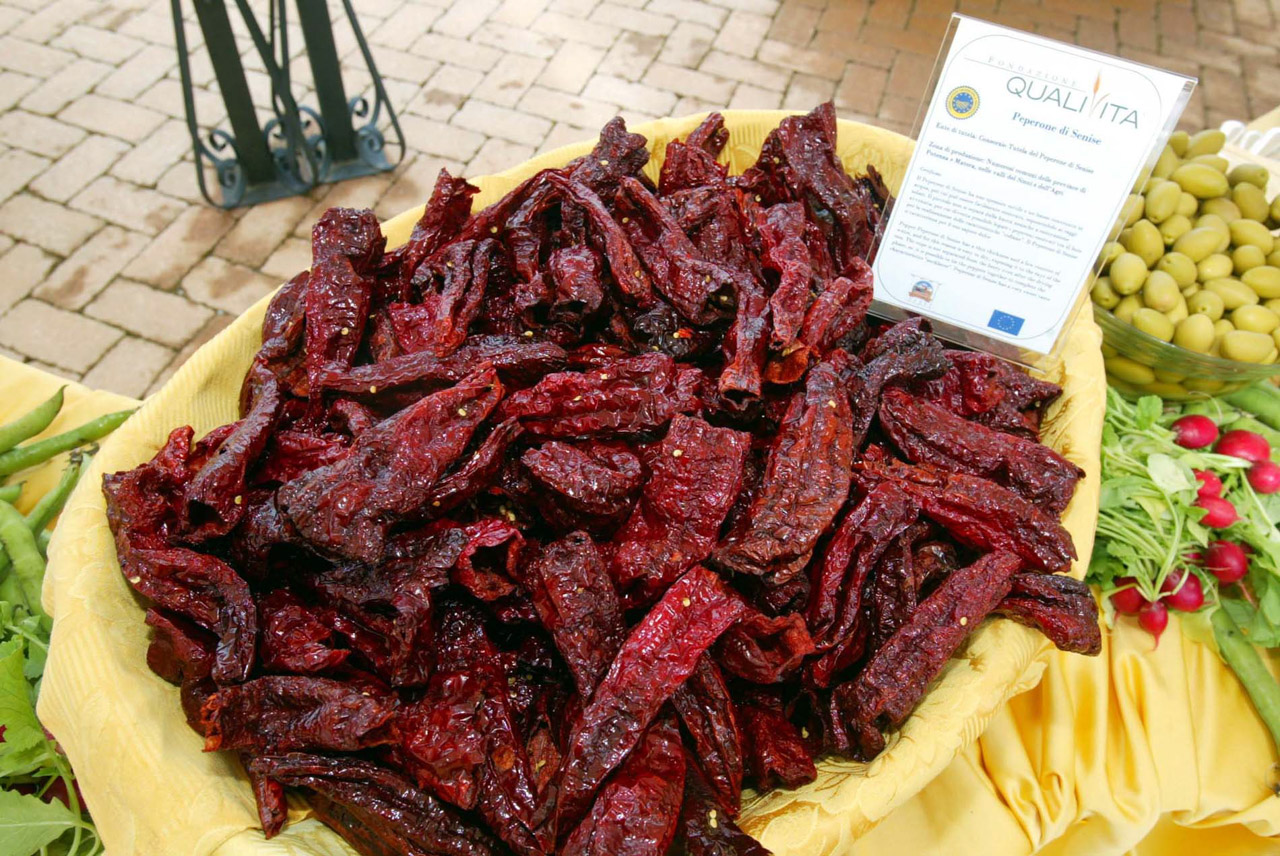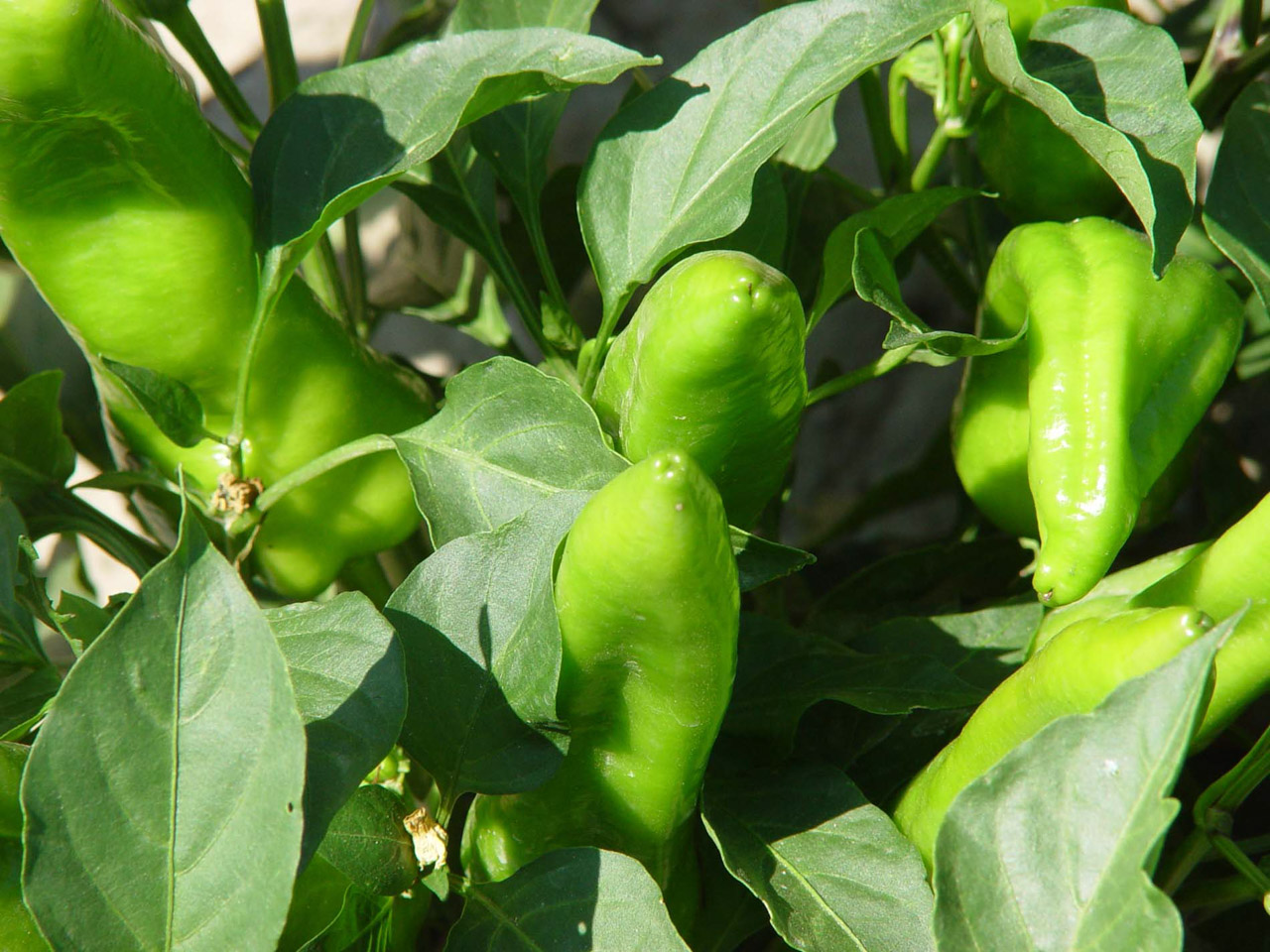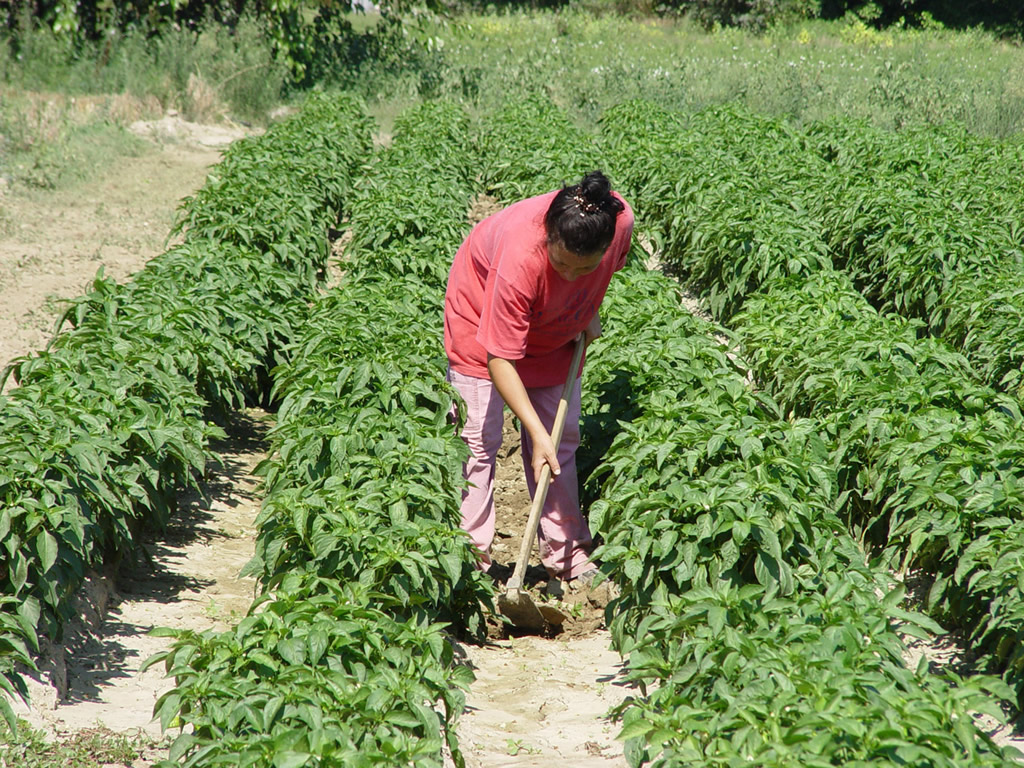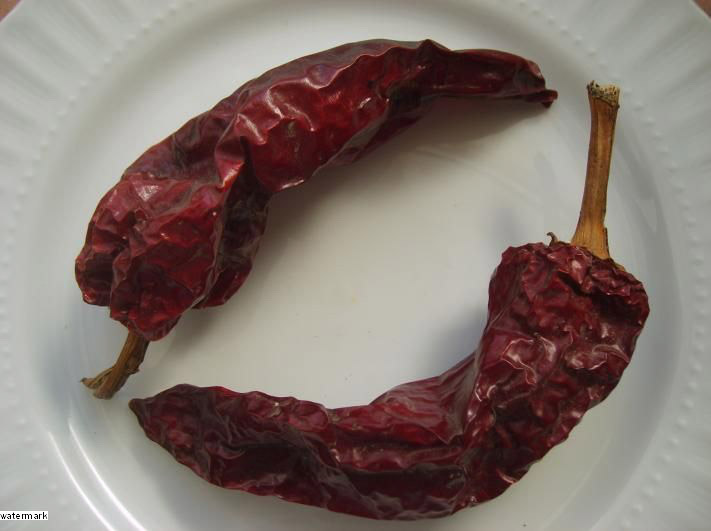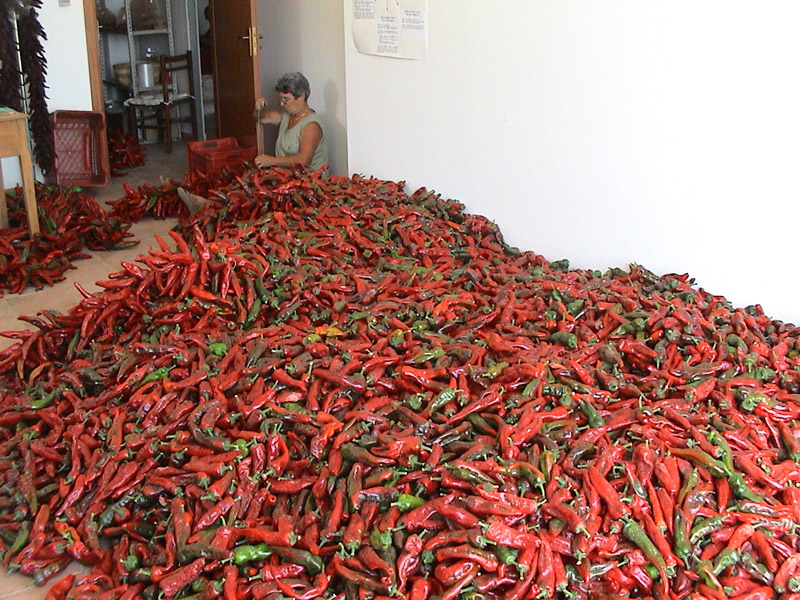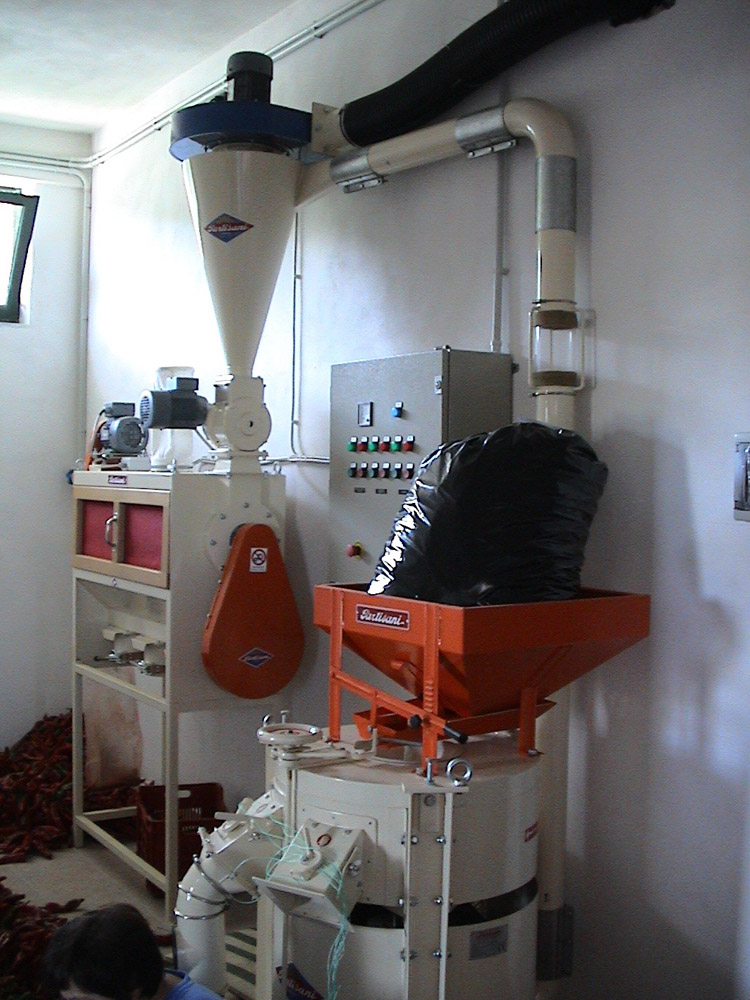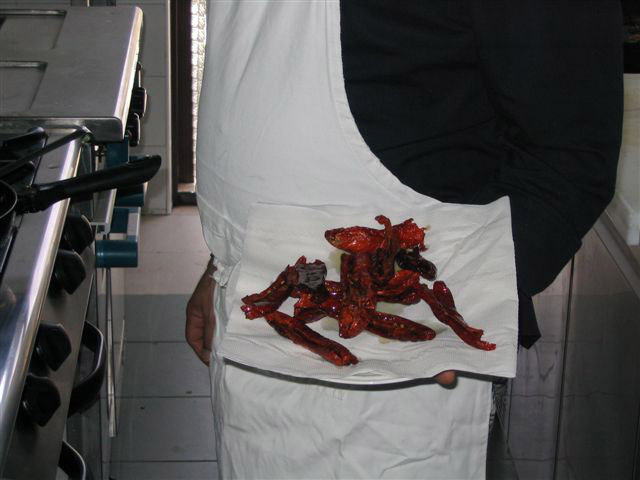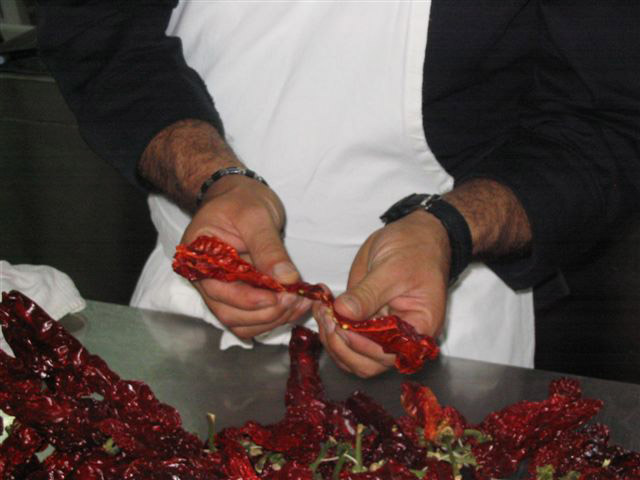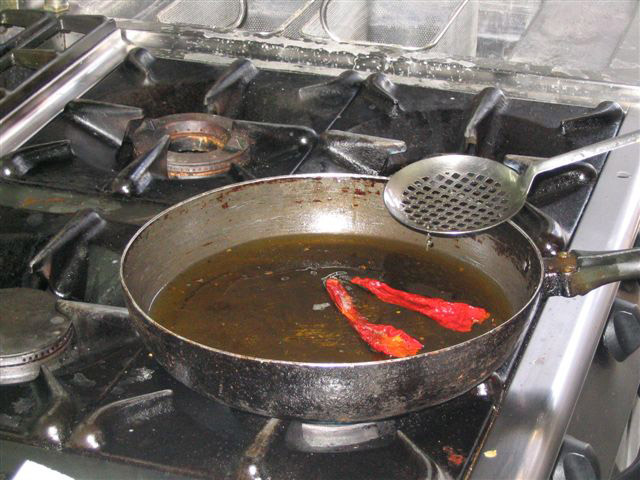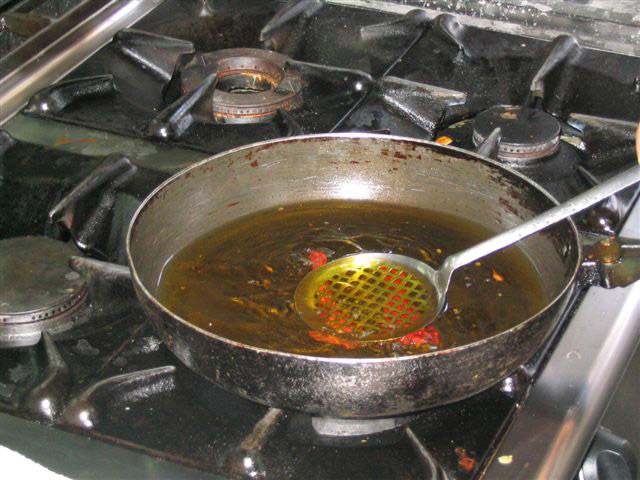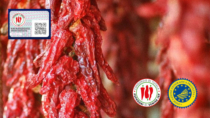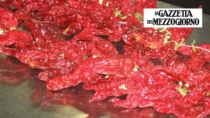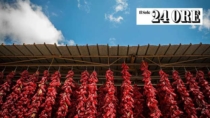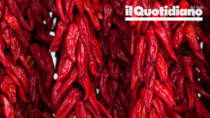Description
The Peperone di Senise PGI refers to the fresh, dried or powdered pepper belonging to the species Capsicum annuum, deriving from the Tronco (truncated), Uncino (hooked) and Appuntito (pointed) morphologic varieties.
Production Area
The production area of Peperone di Senise PGI is within the Municipality of Senise and several neighbouring municipalities in the provinces of Matera and Potenza, in the Basilicata region.
Production Method
Sowing is carried out by hand in the period between the third week of February and the first fortnight of March. The pepper seedlings must be transplanted between May and June, after the germination of the seeds, which are obtained from Mother plants selected from fields in the production area. As this species tends to ripen at different times, harvesting is carried out by hand once the peppers are fully ripe, when the skin has turned the characteristic crimson red colour. To obtain the dried product, the harvested peppers undergo a unique transformation process which involves them being air dried naturally. The peppers are laid out on cloths or nets, away from light, in areas that are dry and well-ventilated, where they are left for at least 2-3 days. The peduncles must be strung together in such a way that the peppers form an angled spiral, thereby forming the characteristic “necklace” or “wreath”. They must then be left exposed to the sun until the water content reaches a maximum of 18% and they have turned wine-red. The product must then be placed in well-ventilated rooms. To be transformed into powder, the dried peppers are placed in ovens to eliminate any residual moisture, thereby facilitating the grinding process.
Appearance and Flavour
The Uncino and Appuntito varieties of Peperone di Senise PGI are slightly deformed, with only slightly evident ribs and a pointed apex; the Tronco variety is cone-shaped, with very pronounced ribs and a trunk-shaped apex. They are green or deep red in colour and all three varieties have a sweet flavour.
History
The origins of Peperone di Senise PGI date back to the 16th and 17th centuries, when this vegetable arrived in the production area and found an ideal environment that promoted growing and selection. Initially production developed as an agricultural activity carried out for personal consumption, but the unique characteristics of this product ensured that over time it became a valuable source of income for the families who cultivated it.
Gastronomy
Fresh Peperone di Senise PGI can be kept in the refrigerator for about 10 days. Dried and powdered peppers keep much longer and should be stored in a cool, dry place. It is a highly valued ingredient in many recipes in the Basilicata cuisine, such as the characteristic cruschi peppers, which are dried and fried in olive oil. The pepper powder is used to flavour local traditional soups, pastas or charcuterie.
Marketing
The product is marketed as Peperone di Senise PGI, in the following: Uncino, Appuntito and Tronco. It is sold: dried in “wreaths” with a maximum length of 2 metres, or individually, whole or without the peduncle and seeds, in food-grade packaging that is in compliance with current regulations; and transformed into powder sold in food-grade packaging that is in compliance with current regulations.
Distinctive Features
Peperone di Senise PGI is characterised by its thin pulp and the fact that the peduncle remains solidly attached to the pepper even after drying.









